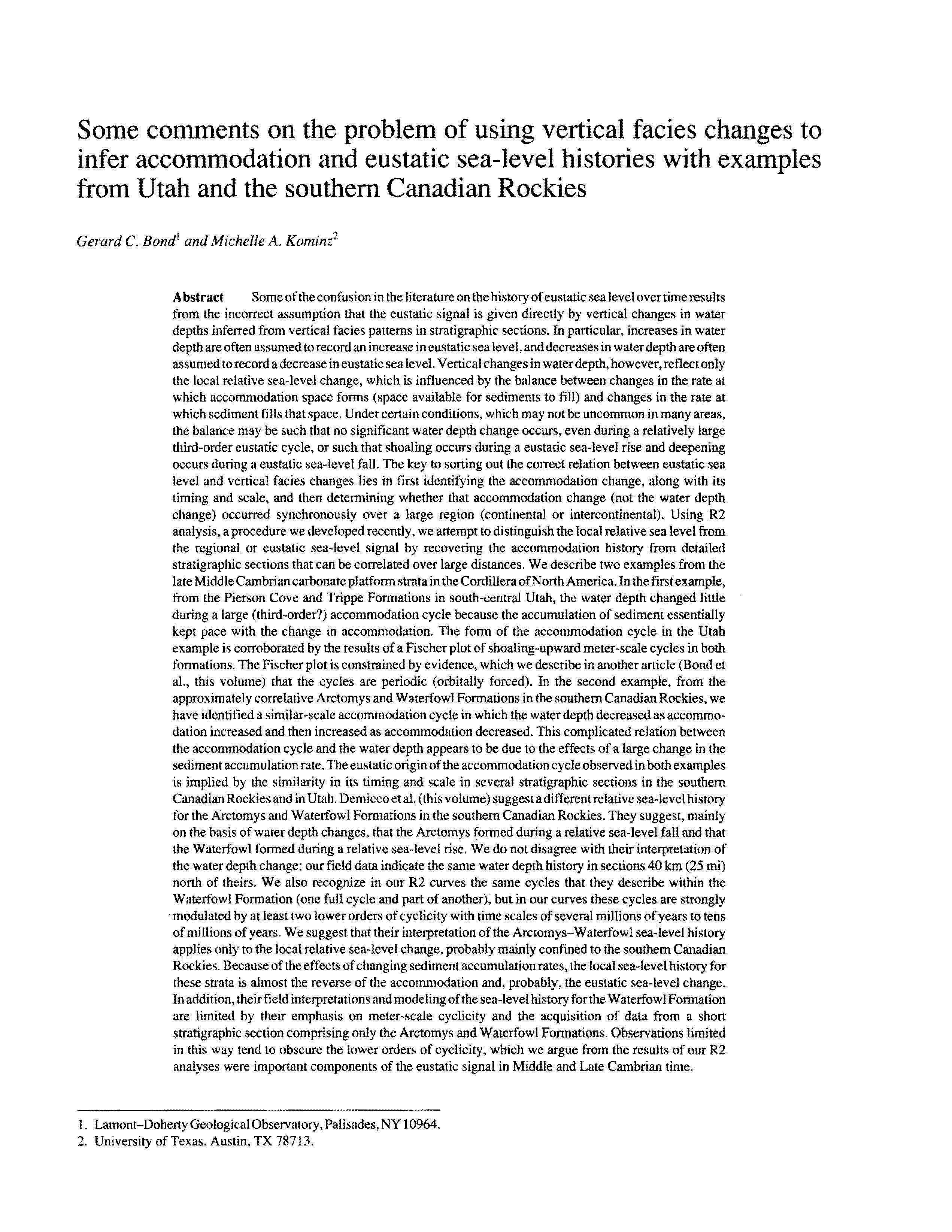Some comments on the problem of using vertical facies changes to infer accommodation and eustatic sea-level histories with examples from Utah and the southern Canadian Rockies
DOI:
https://doi.org/10.17161/kgsbulletin.no.233.20463Abstract
Some of the confusion in the literature on the history of eustatic sea level over time results from the incorrect assumption that the eustatic signal is given directly by vertical changes in water depths inferred from vertical facies patterns in stratigraphic sections. In particular, increases in water depth are often assumed to record an increase in eustatic sea level, and decreases in water depth are often assumed to record a decrease in eustatic sea level. Vertical changes in water depth, however, reflect only the local relative sea-level change, which is influenced by the balance between changes in the rate at which accommodation space forms (space available for sediments to fill) and changes in the rate at which sediment fills that space. Under certain conditions, which may not be uncommon in many areas, the balance may be such that no significant water depth change occurs, even during a relatively large third-order eustatic cycle, or such that shoaling occurs during a eustatic sea-level rise and deepening occurs during a eustatic sea-level fall. The key to sorting out the correct relation between eustatic sea level and vertical facies changes lies in first identifying the accommodation change, along with its timing and scale, and then determining whether that accommodation change (not the water depth change) occurred synchronously over a large region (continental or intercontinental). Using R2 analysis, a procedure we developed recently, we attempt to distinguish the local relative sea level from the regional or eustatic sea-level signal by recovering the accommodation history from detailed stratigraphic sections that can be correlated over large distances. We describe two examples from the late Middle Cambrian carbonate platform strata in the Cordillera of North America. In the first example, from the Pierson Cove and Trippe Formations in south-central Utah, the water depth changed little during a large (third-order?) accommodation cycle because the accumulation of sediment essentially kept pace with the change in accommodation. The form of the accommodation cycle in the Utah example is corroborated by the results of a Fischer plot of shoaling-upward meter-scale cycles in both formations. The Fischer plot is constrained by evidence, which we describe in another article (Bond et al., this volume) that the cycles are periodic (orbitally forced). In the second example, from the approximately correlative Arctomys and Waterfowl Formations in the southern Canadian Rockies, we have identified a similar-scale accommodation cycle in which the water depth decreased as accommodation increased and then increased as accommodation decreased. This complicated relation between the accommodation cycle and the water depth appears to be due to the effects of a large change in the sediment accumulation rate. The eustatic origin of the accommodation cycle observed in both examples is implied by the similarity in its timing and scale in several stratigraphic sections in the southern Canadian Rockies and in Utah. Demicco et al. (this volume) suggest a different relative sea-level history for the Arctomys and Waterfowl Formations in the southern Canadian Rockies. They suggest, mainly on the basis of water depth changes, that the Arctomys formed during a relative sea-level fall and that the Waterfowl formed during a relative sea-level rise. We do not disagree with their interpretation of the water depth change; our field data indicate the same water depth history in sections 40 km (25 mi) north of theirs. We also recognize in our R2 curves the same cycles that they describe within the Waterfowl Formation (one full cycle and part of another), but in our curves these cycles are strongly modulated by at least two lower orders of cyclicity with time scales of several millions of years to tens of millions of years. We suggest that their interpretation of the Arctomys-Waterfowl sea-level history applies only to the local relative sea-level change, probably mainly confined to the southern Canadian Rockies. Because of the effects of changing sediment accumulation rates, the local sea-level history for these strata is almost the reverse of the accommodation and, probably, the eustatic sea-level change. In addition, their field interpretations and modeling of the sea-level history for the Waterfowl Formation are limited by their emphasis on meter-scale cyclicity and the acquisition of data from a short stratigraphic section comprising only the Arctomys and Waterfowl Formations. Observations limited in this way tend to obscure the lower orders of cyclicity, which we argue from the results of our R2 analyses were important components of the eustatic signal in Middle and Late Cambrian time.
Downloads

